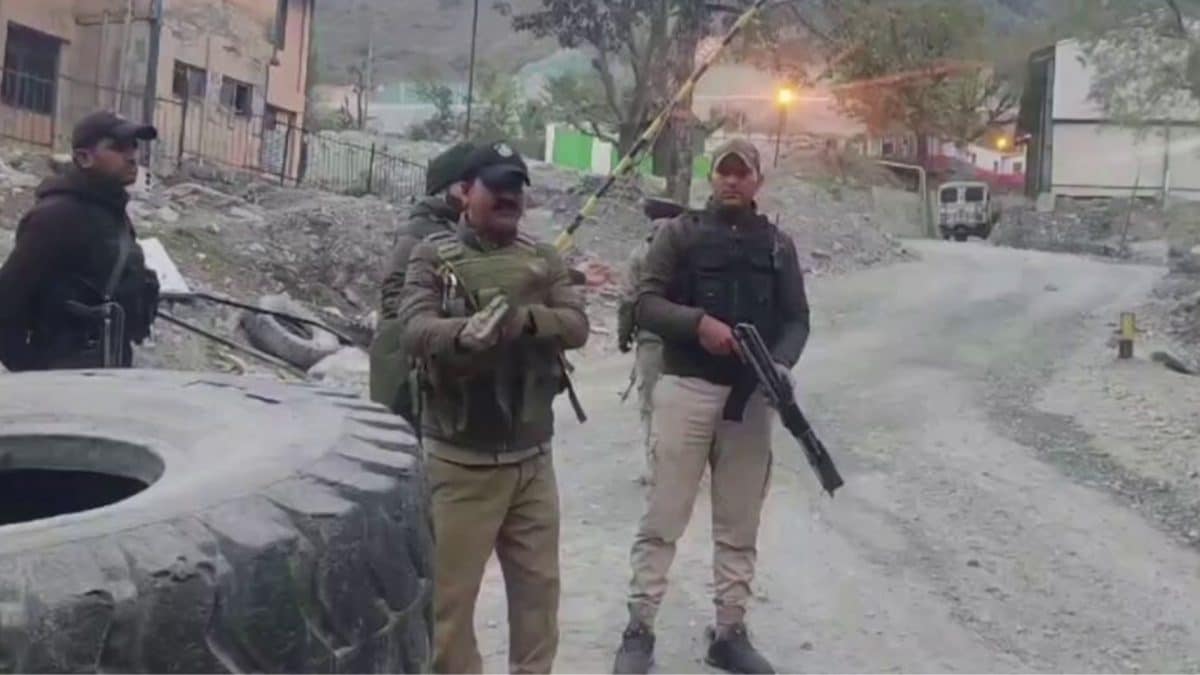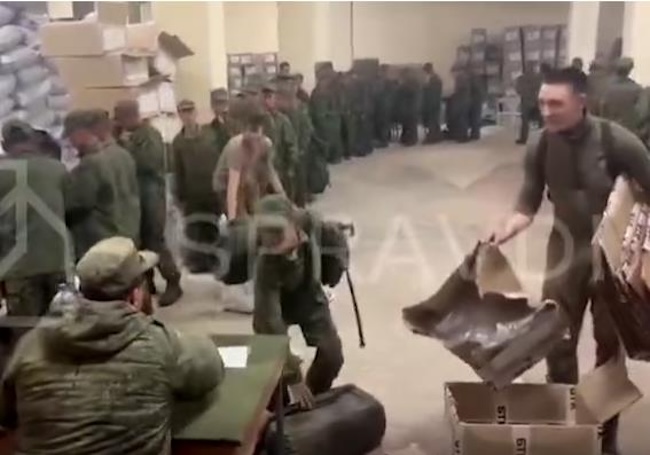
In the last 15-20 days, Jammu and Kashmir has seen nine terrorist attacks, including the attacks on civilian non-local labourers, market places, security forces, and civilian infrastructure. Before that, over the last two-three years, the Pakistan-supported terrorist groups have staged spectacular attacks in the Jammu region, killing even the highly-trained Indian special forces. Now the question arises: what does Pakistan want? In my observations, I have realised that most of the analysts, special forces veterans, and journalists continue to stick with conventional explanations like Pakistan’s efforts to keep the pot boiling amidst militancy taking a backseat due to the 370 move, Islamabad’s attempts to internationalise the issue due to the lack of support from the international community, Pakistan’s internal political equations between the civilian and military administration, etc.
However, I wish to bring attention to something that we are missing in terms of objective analysis. During my recent visit to Kashmir, which included travelling in north, south, and Central Kashmir, border regions, and the Jammu region, I found that massive infiltration has taken place. During my various personal interviews, it was difficult to find the precise number of foreign terrorists; however, a rough estimate indicates that at least there are 120 foreign terrorists in Kashmir and the Jammu region combined.
Second, they are highly trained terrorists with advanced skills in combat and weapons handling. Most of them have fought alongside the Taliban in Afghanistan. Some of them also include Pakistani army regulars and the members of their special forces.
Third, they use M4 assault rifles with advanced night vision and telescopic devices, enabling them to take head shots even during the night. It presents a great challenge to Indian SFs because most of them are using either AK47 or INSAS rifles with poor night vision capabilities. With INSAS rifles, there are multiple issues related to jamming, accuracy, and poor metallurgy.
Fourth, the Indian special forces are facing a major challenge on the intelligence front. Due to the heavy reliance on technological intelligence (TECHINT) since 2016, the human intelligence (HUMINT) footprint has suffered a major degradation in J&K. Further, due to the faulty policing and intelligence practices, idealistic approach, and poor police leadership in the last few years, the HUMINT has significantly declined in quality and quantity.
At the same time, Pakistan has changed its approach to recruiting and dealing with its human assets in J&K. They have abandoned all the previous OGWs (Over Ground Workers) and recruited new ones. The new OGWs are not the old-styled loyal stalwarts who were privy to a tremendous amount of insider information about the terrorist groups and their operations.
The new OGWs include young boys and girls who are assigned a particular task of delivering weapons, cash, etc. to a specified location from where someone else collects it. The information is shared on a purely need-to-know basis.
The main handler is coordinating the entire game from Pakistan. He stays in touch with an array of OGWs, hybrid militants, guides, and foreign terrorist infiltrating J&K. On the TECHINT front, the foreign terrorist groups are either radio silent or they have improvised.
They are using Ultra sets, which have not been decrypted yet. Fifth, it’s high time one realised that the terrorists are enjoying local support. The dominant discourse of militancy and Pakistan losing ground support in Kashmir is nothing more than a lullaby fed to Delhi to intensify its soporific state.
Reportedly, the bureaucratic and intelligence information channels are feeding a pleasant narrative to Delhi that the abrogation of Article 370 has dealt a death blow to militancy. The local Kashmiris have lost interest and developed a sense of fatigue. Some recent examples of the Tiranga rallies, cinemas reopening in Kashmir, the organisation of international events like the G20, sports matches and fashion programs, the massive inflow of tourists, and the peaceful passage of elections have made Delhi complacent and live in a make-believe world of Kashmir, leaving militancy behind.
Undoubtedly, after 370 abrogations, stone-pelting has almost vanished, the separatist leadership is in disarray, and local terrorist groups like Hizbul Mujahideen are facing a leadership crisis. Indeed, there is a sense of fatigue, and the present-day Kashmiri is basking in the economic prosperity and peace that have followed the 370 move. Yet, the lack of political leadership, bureaucratic apathy, arrogance, and mounting public grievances have added more weight to people’s anger.
Transnational Terrorist Groups (TTGs) like Al Qaeda and Islamic State Khorasan Province and Islamist groups like Muslim Brotherhood find immense support in addition to the Pakistan-supported terrorist groups. The younger generation has not seen non-Muslims like Sikhs and Pundits in Kashmir. Their worldview is overly religious, extremist, and medieval.
Hence, the foreign terrorists are likely to find a robust support system in J&K. More recently, the growing religious extremism and disenchantment with the state among the hitherto pro-India communities like Gujjar-Bakarwal and Paharis is also strengthening the terror support system, making logistics, shelter, and movement easier for the foreign terrorists. Sixth, Pakistan’s signals are confusing the Indian establishment.
A major segment of the Indian security establishment believes that economically ruined Pakistan is facing massive terrorist challenges from Tehrik-i-Taliban Pakistan (TTP) and Baluch rebel forces; hence, it is in no position to orchestrate large-scale terror attacks in India. Several prominent Pakistani politicians, like Mariyam Nawaz and Pakistani foreign minister Ishaq Dar, are releasing positive statements about enhancing trade ties between the two countries. However, these lofty proclamations of love and bonhomie do not align with the massive infiltration of foreign terrorists that has taken place since 2019.
Seventh, in the recent upsurge of militancy, the religious factor is very prominent. According to some of the interlocutors from the special forces, the communication intercepts reveal a distinct religious language. The terrorist commanders are instructed to target Hindu civilians, pilgrims, and tourists, contrary to the conventional approach of targeting special forces.
It seems that the terror groups and their handlers want to leverage the aggressive communal polarisation happening in the Indian hinterland. Eighth, the special forces have come across a high degree of interoperability and coordination within the terrorists’ rank and file of different groups. For example, in Bandipora (Kashmir region), the special forces have recovered M4 rifles with dead militants, generally expected from Jaish cadres who mostly infiltrate from Jammu region.
Likewise, in the Jammu region, special forces have found The Resistance Front (TRF) posters and chats with Lashkar-e-Taiba (LeT) handlers sitting across the border, with dead terrorists. TRF operates in the Kashmir region. Jammu region is infested by mostly Jaish proxies like PAFF and Kashmir Tigers.
Such a high degree of interoperability creates confounding smokescreens and creates severe challenges in identifying the infiltration routes and the Tanzeems involved. Encounters in the Bandipora region raise questions on accepted theories of the majority of infiltration taking place from the Jammu region and militants moving to the valley from there. In the backdrop of the points discussed above, it is imperative to investigate Pakistan’s motivations.
Following possibilities emerge out of objective analysis of the current spike in militancy: Pakistan is ramping up terrorism in J&K to keep the pot boiling, show its presence, sustain routine militancy, and strengthen its credibility as a powerful actor in J&K as it suffered a major dent after the abrogation of article 370. Since Pakistan is occupied with its home-front terrorism challenges from TTP, and Baluch rebels and border frictions with Taliban, it wants to keep India embroiled with Kashmir militancy, to prevent it from intensifying Pakistan’s challenges by strengthening its adversaries like TTP Baluch rebels and Taliban. Pakistan suspects Indian involvement in attacks on Chinese engineers and infrastructure projects in Balochistan, though without any concrete evidence.
Hence, with the ongoing upsurge in militancy, it is signalling retaliation to India’s alleged involvement with Baluch rebels and TTP. In the recent past, unknown gunmen have killed several terrorist cadres and commanders in Pakistan who played a major role in Kashmir jihad. Pakistan suspects India’s role in these killings so with terror attacks it is indulging in tough posturing.
Apparently, Pakistani generals do not appear to be too soft with India like Bajwa, lest they lose their clout and support. Some of the foreign terrorists in Kashmir have a past association with TTP. Possibly, the ISI masterminds are sending hardcore Afghan-returned jihadists to the Kashmir battle front because they have been rendered jobless after the return of Taliban.
If they are idle, they can be a headache for the Pakistani establishment. Also, they might be shifting some of the compliant TTP terrorists to Kashmir as a part of a deliberate strategy to turn them into ‘good’ terrorists. In the past, they offered such incentives to TTP jihadists in 2014 during their crackdown on TTP.
To wean away the more pliable segment of TTP they shifted them to Kashmir and weakened TTP from within. In the final and the most alarming scenario, we need to measure the possibilities of Pakistan conspiring some large-scale coordinated action in J&K. If they wanted to sustain routine militancy, they would have preferred a mix of foreign and local terrorists with the balance tilted in the favour of local ones.
However, their current focus is on sending and consolidating the strength of foreign terrorists. Apparently, they are discouraging local recruitment and keeping the exposure of foreign to local terrorists and OGWs at minimum. Other explanations to explain the pessimism towards local recruitment are Islamabad’s caution to curtail espionage and their Pakistan’s intent to not put Kashmiris under more severe pressure and monitoring of Indian SFs.
Nevertheless, despite these seemingly convincing reasons, the possibility of Pakistan planning a bigger action cannot be discounted. Such a bigger action can include coordinated terrorist attacks at multiple places in J&K and possibly in the Indian hinterland. Along with, there can be a massive civil unrest and violent protests harnessing the anti-India resentment among the Kashmiri locals.
The foreign terrorists can act as catalysts and coordinators of such a widespread action. As a part of this grander scheme of orchestrating something big, the foreign terrorists are indulging in several attacks on labourers and civilians as a diversionary tactic, informed a senior police officer from J&K, on the condition of anonymity. Further, he said that more than 80 foreign terrorists are in the Jammu region only and they are not looking for the contact with the special forces.
At the moment, they are consolidating and infiltrating in large numbers. After the Balakot episode, Pakistan is likely to keep the casualty and damage below the minimum threshold to avoid redux of a full-fledged war like conditions between the two countries; however, if their external players involved guaranteeing robust support to Pakistan in the event of a war-like tension between India and Pakistan, then Islamabad can even go for large scale terror attacks. Further, if external players are involved then Pakistan can execute such large-scale attacks in the Indian hinterland with or without the support and involvement of ISKP and Al Qaeda.
The emergence and nurturing of anti-India elements in Bangladesh, Myanmar, Punjab, Manipur and Khalistani activism and anti-Hindu propaganda and terrorist violence in Canada and the US strongly suggests the increasing role of the Western Deep State in anti-India activities. The recent India-China disengagement may give another crucial reason to such external players to abet Pakistan to rejuvenate terrorism in J&K. Hence, there are strong reasons to explore the role of external players in the ongoing upsurge in J&K terrorism and the likelihood of their potential role in major terror attacks and internal disruptions in the future.
In my numerous interviews with locals in Kashmir, several interlocutors informed me that Kashmiris are silent now which the local conflict watchers call a ‘strategic silence’. A group of young Kashmir University students told me in Pulwama that when Kashmir is silent, it is even more disturbing and it’s compounded by vague signals from Pakistan, it is a time to worry. They said, Pakistan damages more in friendship and peace than in enmity and war.
In the lack of sufficient information, it is difficult to establish the above mentioned possibilities with evidence. However, such doomsday predictions are not as unreal as they can appear to a distant Kashmir watcher. Hence, the Indian agencies need to keenly watch the current developments in J&K and broaden their vision beyond purely intelligence-based kinetic counter terrorist operations.
Also, to make better sense of the developments they need to be situated in the context of larger geopolitical developments and trends. The author is a Cornell University graduate in public affairs, bachelors from St Stephen’s College, Delhi. He is a policy analyst specialising in counterterrorism, Indian foreign policy and Afghanistan-Pakistan geopolitics.
The views expressed in this article are those of the author and do not represent the stand of this publication..














